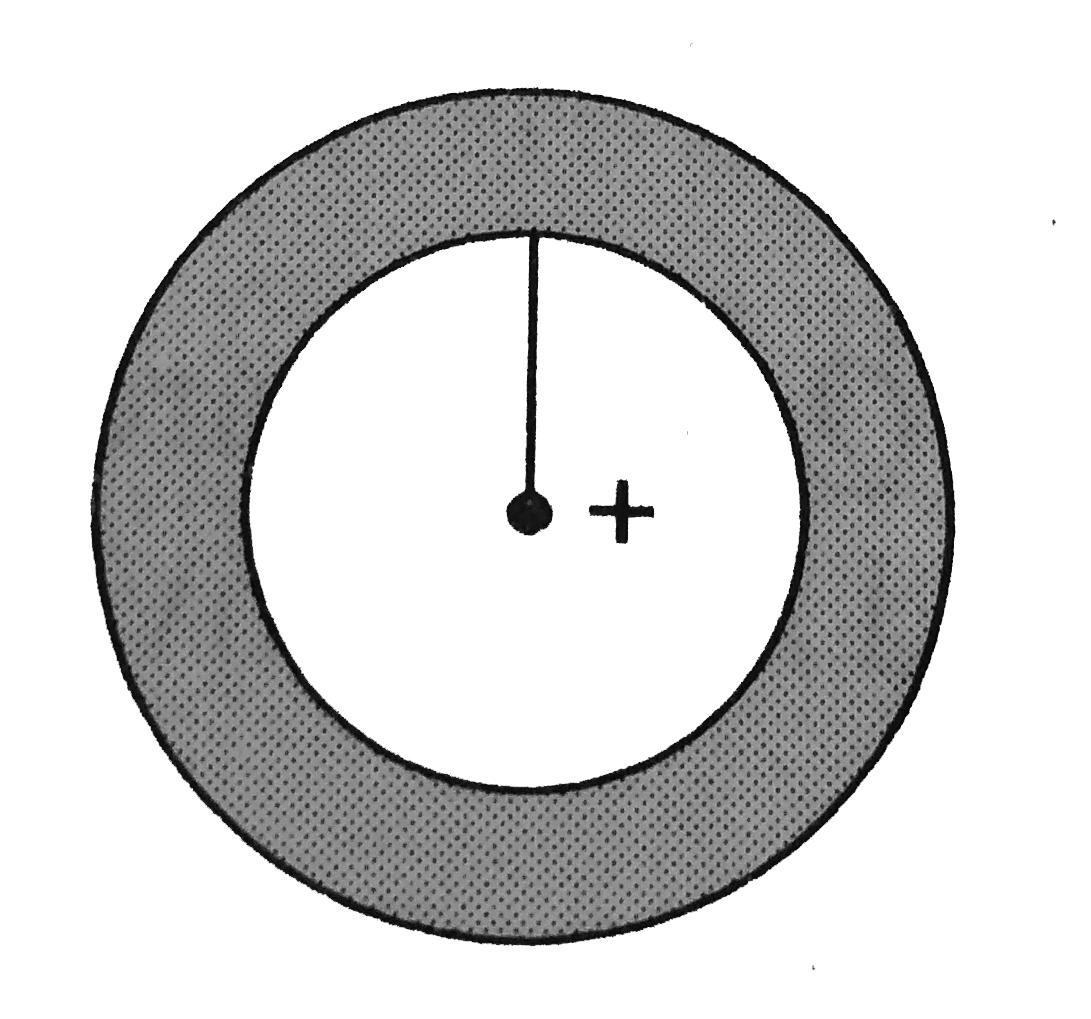A neural (uncharged) metal ball is suspended using a non-magnetic string. A positively charged insulating rod is placed near the ball which is observed to be attracted to the rod. This is because
the ball becomes positively charged by induction
the ball becomes negatively charged by induction
there is a rearrangement of the electrons in the ball
the number of electrons in the ball is more than the number of electrons on the rod
The correct Answer is:B
When the positively charged rod is brought near the uncharged ball, the latter becomes negatively charged due to induction. Due to this reason the ball is observed to be attracted towards the rod.
Topper's Solved these Questions
Similar Questions
A positively charged glass rod is brought near an uncharged pith ball penduium. What happens to the pith ball ?
View SolutionA metal sphere is suspended from a nylon thread. Initially, the metal sphere is uncharged. When a positively charged glass rod is brought close to the metal sphere, the sphere is drawn towards the rod. But if the sphere touches the rod, it suddenly flies away from the rod. Explain, why the sphere is first attracted then repelled?
View Solution
Knowledge Check
- Question 1 - Select One
A positively charged glass rod is brought near an uncharged pith ball pendulum. What happens to the pith ball ?
AThe pith ball is repelled by the rodBThe pith ball is attracted towards the rod, touches it and then repelled.CThe pith ball show no change in positionDNone of these - Question 2 - Select One
In normal cases thin stream of water bends toward a negatively charged rod. When a positively charged rod is placed near the stream, it will bend in the
 AOpposite direction.BSame direction.CIt won't bend at all.DCan't be predicted.
AOpposite direction.BSame direction.CIt won't bend at all.DCan't be predicted. - Question 3 - Select One
An uncharged metal object M is insulated from its surroundings. A positively charged metal sphere S is then brought neat to M. Which diagram best illustrates the resultant distributions of charge on S and M
A B
B C
C D
D
When a positively charged sphere is brought near a metallic sphere, it is observed that a force of attraction exists between the two. It means that
View SolutionSTATEMENT-1: A small metal ball is suspended in a uniform electric field with an insulated tea. Of high energy X-ray beam falls on the ball, the tall will be deflected in the electric field. because
STATEMENT-2: X-ray emit photoelectrons and metal becomes negatively charged.View SolutionAn uncharged metal object M is insulated from its surroundings. A positively charged metal sphere S is then brought neat to M. Which diagram best illustrates the resultant distributions of charge on S and M
View SolutionAn electrically isolated hollow (initially uncharged), conducting sphere has a small positively charged ball suspended by an insulating rod from its inside surface (see diagram).

This causes the inner surface of the sphere to become negatively charged. When the ball is centred in the sphere, the electric field outside the conducting sphere isView SolutionStatement-1: A small metal ball is suspended in a uniform electric field with an insulated thread. If high energy X-rays beam falls on the ball, the ball will be declected in the electric field.
Statement-2: X-rays emit photoelectrons and metal and metal becomes negatively charged.View Solution
